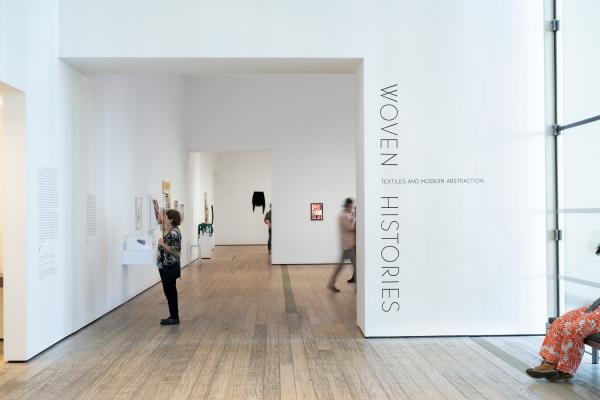For the series LACMA Favorites, we’re sharing highlights from LACMA’s collections and exhibitions chosen by staff from across the museum.
Ruth Asawa’s ethereal looped wire hangings redefine the notion of sculpture as solid form. In the 1950s, the California artist applied artisan techniques like basket-weaving to atypical materials, developing a unique language of open and closed forms and beginning a lifelong journey of transforming a functional technique and modest industrial materials into poetic works of art.
“It’s all about trying to push the medium to whatever limits it has,” says Miguel Aguilar, Junior Collections Management Technician, about three works now on view in the exhibition Woven Histories: Textiles and Modern Abstraction, which reveals how shifting relations among abstract art, fashion, design, and craft shaped recurrent aesthetic, cultural, and socio-political forces, as they, in turn, were impacted by modernist art forms. These sculptures—Untitled (S.027, Hanging, Six-and-a-Half Open Hyperbolic Shapes that Penetrate Each Other) (1954), Untitled (S.310, Hanging Five-Lobed Continuous Form Within a Form with Spheres in the Second, Third, and Bottom Lobes) (c. 1954), and Untitled (S.089, Hanging Asymmetrical Twelve Interlocking Bubbles) (1957)—all embody Asawa’s unique ability to transform her materials into something seemingly ephemeral. “That’s one of the reasons why it’s one of my favorite pieces.”
Woven Histories is on view in BCAM, Level 2, through January 21.
View this post on Instagram



